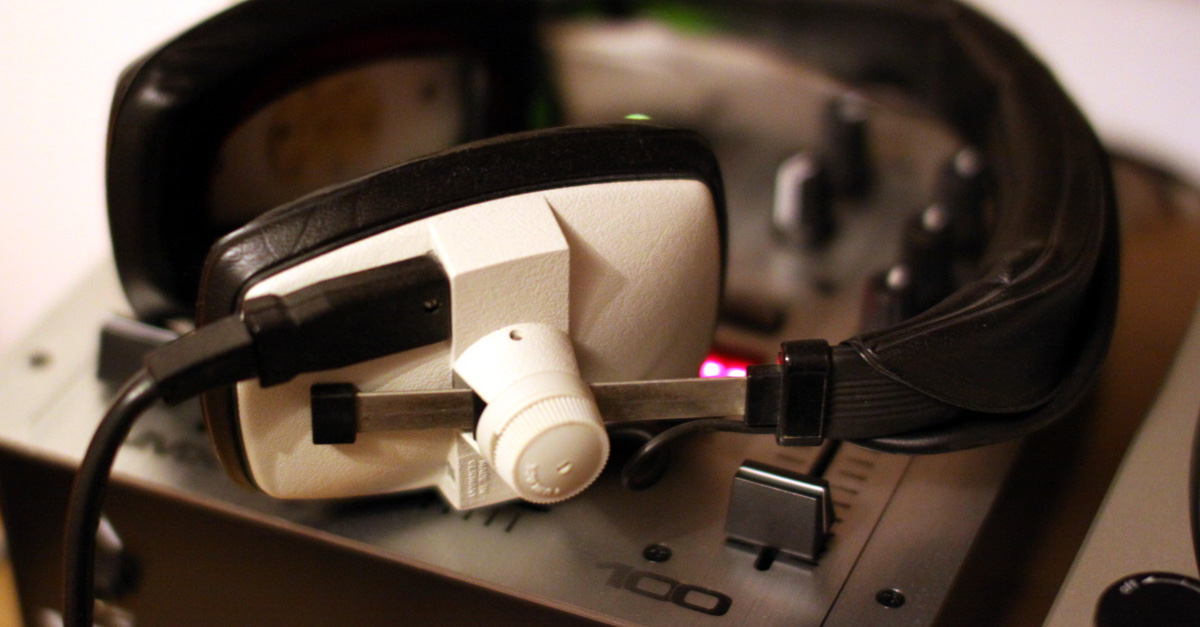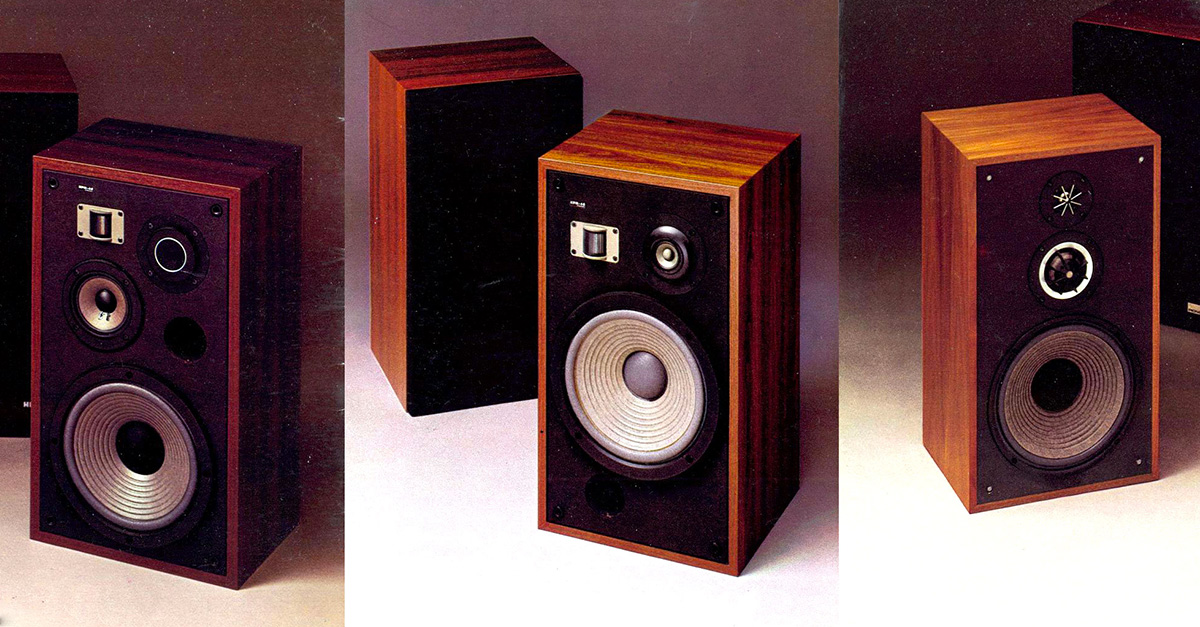
Why Active Listening Is The Most Important Skill For Musicians

Listening is pleasure.
Pushing play on your favourite song means a little vacation—a few minutes to relax and check out.
It’s arguably the best part of music. Those moments when you’re inside the sound and nothing else matters.
But if that’s the only way you listen, you’re missing out on an invaluable skill every producer should have.
It’s a skill equally important as music theory, mixing music or songwriting.
Seeing your listening
We all listen. But the truth is, most of the time you’re listening passively.
“For a songwriter, you don’t really go to songwriting school, you learn by listening to tunes. And you try to understand them and take them apart and see what they’re made of, and wonder if you can make one, too.”
-Tom Waits
It’s the kind of listening you do when you’re washing the dishes, or riding the subway, or walking home from the record store with a fat sack of tunes.
We do it all the time. In fact, the ease of streaming has caused more passive listening than ever.
Even more alarming is that almost 50% of Spotify streams are skipped before the song even finishes.
Listening is learning. But you can’t truly learn from what you’re hearing if you’re listening passively.
Fortunately there’s a second mode of listening that helps you grow as a producer. It’s the listening that helps you understand what sets the greats apart from the amateurs.
It’s called Active Listening. And like most things in music production, it’s a skill you need to develop.
What is active listening?
The active listening definition is simple. Active listening means that all you’re doing is listening.
[adbutler zone_id=”291816″ secure=”1″ type=”asyncjs”]
Passive listening means you’re concentrating on something else. Active listening makes listening your central task.
It makes hearing a process rather than an afterthought. I know what you’re thinking, “I deep-listen to music all the time, how is active listening any different?”
Let me explain.
How to actively listen
Active listening requires no distractions. That means no music videos. No ambient sounds from around your house. No cat petting while you’re tuned in.
You need to just listen.
Turn off your computer screen. If you can, turn off the lights or close your eyes.
Find a space you feel relaxed in with no distractions.
Choose a playback situation that encourages active listening. I recommend headphones but you can use studio monitors as well.
Just make sure there’s no outside sounds floating in. Like that dripping faucet you’ve been meaning to fix.
Use the best possible sound you can. High quality files like WAV or FLAC are best suited for active listening. The more layers you’re able to hear, the better.
Ok, so you’re all set for some active listening? Good. Let’s press play.
Before you think
The first step to effective active listening is to get into a critical mindset. Try to see the music as a set of objects.
Listen for rhythm, timbre and melody. Pick apart all the different instruments and sounds.
Don’t focus too closely on any one part yet. Instead, just try to keep the sound in the front of your brain for easy analysis.
Resist the urge to sink into the music. Don’t let yourself slip into passive listening.
Resist the urge to sink into the music. Don’t let yourself slip into passive listening.
This step will be hard at first, but putting yourself in an analytic mindset will help you focus later on when you’re deconstructing the track.
Active listening techniques
Now that you’re in a good active listening mode, it’s time to start learning from the sound.
Pick a song that you aspire to. Or pick a song that gets stuck in your head all the time. It should be a piece of music that you want to learn something from.
Active listening makes it possible to learn from any sound.
Active listening makes it possible to learn from any sound.
A good place to start is with a question. Your active listening should answer it. Some good questions to ask are:
- What layers are at work?
- What instruments am I hearing? Try to isolate each one and re-listen to the song focussing on each one.
- How does the mood change between the start and the finish?
- Why is the hook so catchy?
- How do the chords progress?
- What key is the song in?
- When does the song shift tone and why?
- What is the structure of the song? Does it follow a common structure like AABA?
- How do the lyrics fit with the music?
- What do the lyrics actually say?
- What is repeated? What changes and when?
These are just some potential questions to ask. You should form your own questions as well based on what you’d like to learn.
For example: if you’re struggling with finding a hook in your own productions, then only listen to the hook of a song you identify with.
You will have to listen many times to isolate and understand each part. Each new listen should answer a new question.
[adbutler zone_id=”291816″ secure=”1″ type=”asyncjs”]
Active listening exercises
Once you’ve done some repeated active listening to a song it’s time to dig a bit deeper.
There are a few active listening exercises that will help you learn even more about what a song is doing, so you can apply it to your own productions.
1. Cover Your Ears
This exercise is easier if you’re using speakers, but you can apply the concept to headphones as well. You might just have to get a little creative.
Gently cover your ears while you’re listening.
Ask yourself what sounds still get through? Which sounds are left behind?
This exercise will help you hear some of the sub frequencies.
Listen for which parts stand out with your ears covered. What sounds better? What sounds worse?
2. Draw A Map
Try to draw what you heard while you were actively listening. Make a map of the song.
Visualize how the song would look in a DAW and label all of the parts.
You’re already hearing how it works. Mapping out the song will help you to see how it works.
This concept doesn’t have to apply to a whole song either.
If there is one part that you would like to understand better then loop it in your DAW. Try to write down the structure of the loop to understand it better.
3. Play It Backwards
To understand a sculpture you must see it from all sides. The same thing goes for music.
Perspective is everything when you’re trying to discover how music works.
Play the song you’re studying backwards. Try to predict how you’ll hear each sound reversed.
Slowing a song down also helps to build perspective. Parts that normally fly by in seconds are drawn out, which makes them easier to dissect.
Sounds you didn’t hear before will come to the surface. So you get the full sonic picture.
4. Analyze it
Throw the song into your DAW software. Download a free VST plugin that allows you to spectrum analyze your track.
I recommend Blue Cat’s freeware VST bundle.
There are also some great online tools like Academo’s Spectrum Analyzer.
Which parts sit where in the spectrum? What image do the frequencies create?
Just like mapping a song on paper, the frequency analyzer will help you see what you’re hearing.
Active listening turns any sound into a master class on production.
Apply what you’ve heard
Active listening turns any sound into a master class on production.
It lets you not only hear a song, but understand it. So take what you find and add it to your own productions.
Because the only way to get better at producing is to listen.
Gear guides, tips, tutorials, inspiration and more—delivered weekly.
Keep up with the LANDR Blog.





